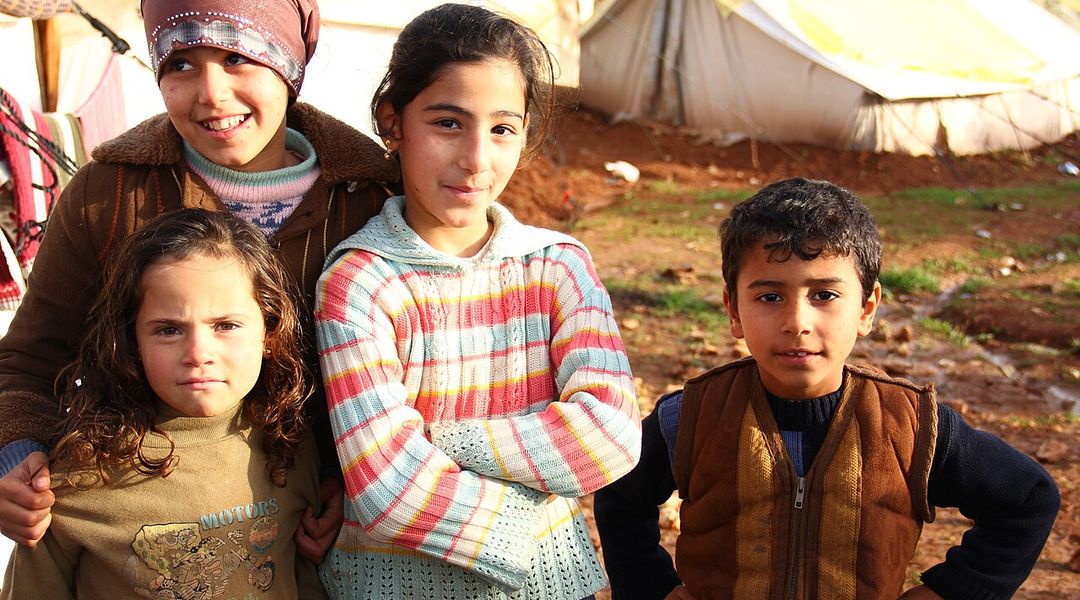The road was clear. The checkpoints were sparse. And what about the bright
sun that warmed the bus’s frame? A week after the fall of Bashar al-Assad,
Rahidane Zidane Saha, 61, left one of the camps in the Idlib region, Mehmet
Arif Kidiman, near the Turkish border. She needed to return to her home in
Eastern Ghouta, in the south, which she fled in 2013. Her husband’s body is there,
buried somewhere beneath the rubble left by regime bombs. It took her an hour
to realize she could no longer live there. Her city is nothing more than a pile
of debris. Hope lasted only as long as the round trip.
“They told us Aleppo and then all of Syria were liberated. I was happy,”
confided the mother, known to her neighbors as Oum Anouar. “Now I know I’ll
spend the rest of my life in this camp. I hope my children will see the new
Syria.”
Since the start of the Syrian revolution in 2011, two million displaced
Syrians have been clustered in this northwestern pocket due to the war’s twists
and turns and the “pacifications” carried out by Russian air forces and the
Syrian army. In Damascus, Ahmed al-Sharaa, leader of the coalition that has
taken power, declared that his priority is the return of displaced people and
refugees. However, this prospect seems far off.
Return impossible
In front of Oum Anouar’s tent, there’s all manner of trash—rotting meat
nibbled by cats, excrement, and scraps of tarp with faded humanitarian logos.
The only thing increasingly scarce in Mehmet Arif Kidiman is plastic.
Repurposed or sold, it’s also used as fuel for stoves during the harsh winter
on this damp, brown northern Syrian soil. For the past 11 years, Oum Anouar,
who looks 10 years older than her age, has spent her days collecting it. It’s
the only task she has left.
At Mehmet Arif Kidiman, many, like Oum Anouar, have gone on reconnaissance
trips only to abandon the idea of returning home. Ayman Mazzen, also from
Ghouta, sees it daily. Among the 1,000 families under his care as a moukhtar
(a local mayor), only about ten have permanently left the camp. “I call them
every day to check on them. They’ve all pitched their tent here next to
their former building. Rebuilding will take years,” explains this former driver
of the “micro” minivans that once crisscrossed all of Syria before the war.
A forgotten humanitarian
crisis
At the camp’s grocery store, the manager no longer allows tabs. Zeid
Chamouti, 41, owes $500, accrued over eight years in the camp. He can’t return
to his hometown of Homs, a four-hour drive south until he pays his debt. “I’ll
need a second life to repay this. Who’s thought about this problem?” His
situation isn’t unique. In early January, the storekeeper filed a complaint
against indebted families—essentially everyone in the camp.
According to the United Nations Office for the Coordination of Humanitarian
Affairs, the first cross-border missions from Turkey were conducted in
northwest Syria in January. At Mehmet Arif Kidiman, however, no humanitarian
aid packages have arrived since June 2024, according to camp officials.
“People survive on bread, zaatar (a type of herb), and oil, thank
God. We’re the forgotten of victory,” said Ayman Mazzen, apologizing for
offering only tea to visitors.
A seemingly insoluble equation has emerged in post-Assad Syria. These
displaced people have no choice but to stay, but how? With the war over, they
fear being consigned to the black hole of international neglect. For now, the
end of the dictatorship has brought them nothing—except that waiting has been
replaced by emptiness.
Nearly 200,000 refugees have returned home
since Assad’s fall
Between December 8, 2024, the date of Bashar al-Assad’s fall, and January
16, 2025, nearly 200,000 Syrians have returned to their country, according to a
dashboard shared on the social media platform X by Filippo Grandi, the United
Nations High Commissioner for Refugees.
After the civil war began in 2011, millions of Syrians fled the conflict,
economic collapse, and humanitarian crisis, seeking refuge in neighboring
countries and beyond.
Turkey, which shares a border of over 900 kilometers with Syria, still hosts
2.9 million Syrians. In Europe, Germany has taken in 700,000 refugees, while France
has received 45,000.
